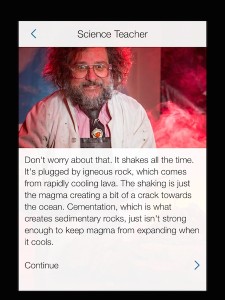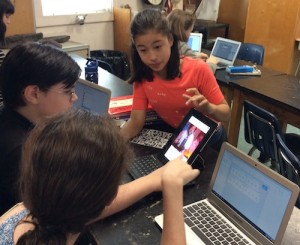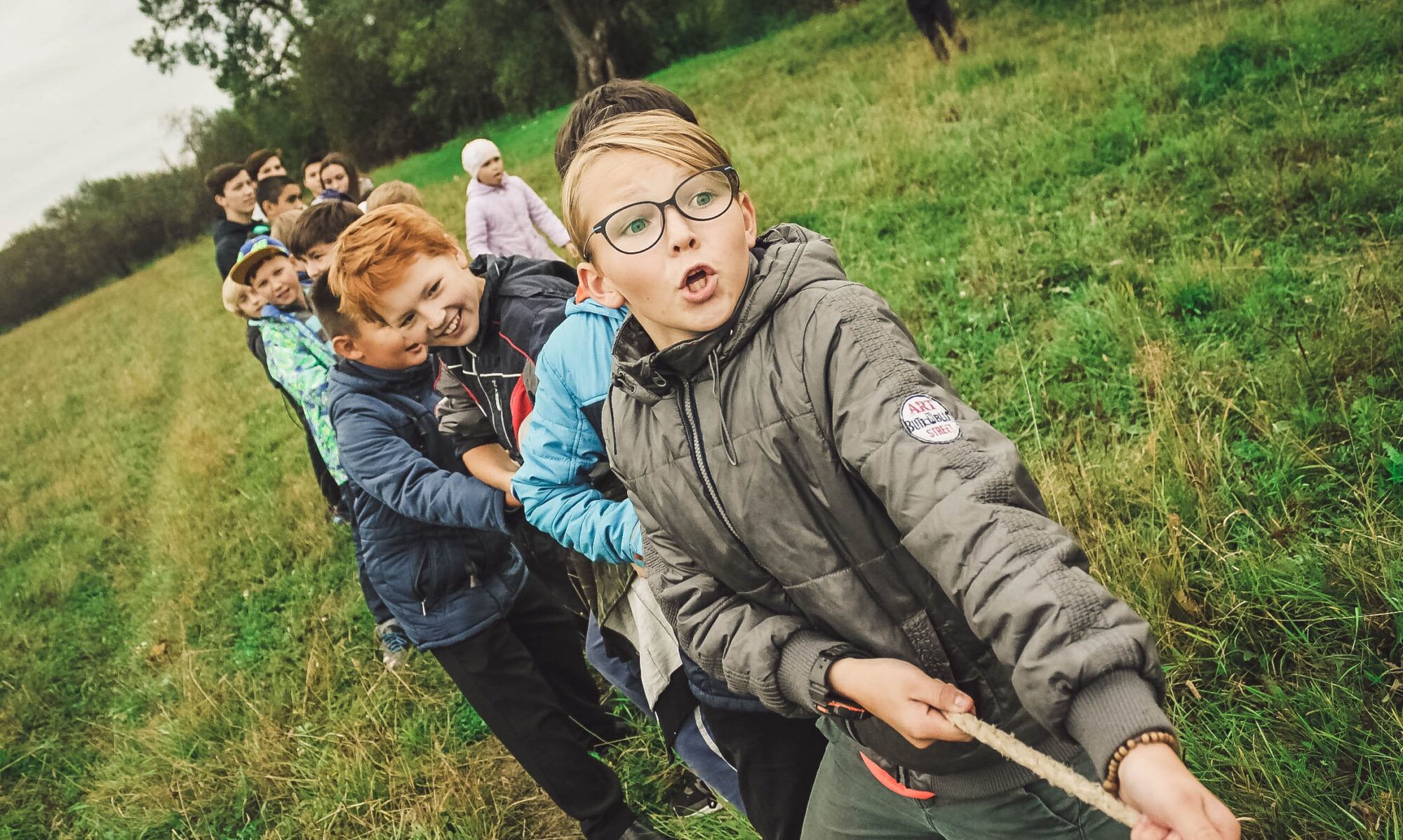Putting a human face on science storytelling
 Lava flows down the halls of Main Street Middle School, in Montpelier, Vermont, and you must choose whether you’ll go with the flow or try to cool off somewhere and become an igneous rock. In another portion of the school, you’re the new kid, getting a tour from one of your peers when a volcano erupts, and you have only your geology wits (and a science teacher with fabulous hair) to save you.
Lava flows down the halls of Main Street Middle School, in Montpelier, Vermont, and you must choose whether you’ll go with the flow or try to cool off somewhere and become an igneous rock. In another portion of the school, you’re the new kid, getting a tour from one of your peers when a volcano erupts, and you have only your geology wits (and a science teacher with fabulous hair) to save you.
These are middle schoolers building mobile, place-based games with ARIS, taking advantage of the game editor’s powerful new re-design and one science educator’s trust in letting his students demonstrate what and how they learn.
ARIS — Augmented Reality Interactive Storytelling — is a free, iOS-based platform designed specifically for students and educators to build games in a web browser that can be played on iOS devices.
 Middle grades science teacher Eli Rosenberg has constructed a unit around geological changes which aims to tell the story of plate tectonics and volcanology with a human focus. In fact, ARIS was one of four different options Rosenberg and his teaching partner offered students “to tell a human story about Earth’s physical processes”. The full roster of tool choices:
Middle grades science teacher Eli Rosenberg has constructed a unit around geological changes which aims to tell the story of plate tectonics and volcanology with a human focus. In fact, ARIS was one of four different options Rosenberg and his teaching partner offered students “to tell a human story about Earth’s physical processes”. The full roster of tool choices:
- make a large (4×8) 3D cardboard topographic model of the US with selected 3D-printed landforms.
- make a custom .kml file using Google Maps
- make a storybook
- make a Prezi that investigates a current event (fracking earthquakes in Oklahoma, for example)
- make an ARIS story or adventure that uses QR codes. The project could be a non-linear model of the rock cycle, it could be a linear road trip through landforms of the united states, or it could be a quest-adventure looking for famous rocks (Stonehenge anyone?).
The students who chose ARIS started with this ARIS scaffolding worksheet (by the Tarrant Institute’s own Mark Olofson).
Team-based game design focuses heavily on storytelling
The games being designed in Rosenberg’s science classroom focus heavily on the narrative arc of game-play, driven in part by the redesigned ARIS game editor, which forces game designers to construct their games as a series of Scenes. Designers then create characters to populate the scenes and use first-order logic in a drag-and-drop design to create branching paths of gameplay.
In Rosenberg’s class, ARIS designers work in teams of three and four, but approach the actual game-building in different ways. One group we spoke with had chosen one student to do the actual work in the ARIS editor while other team members focused on finding images and double-checking the science. Another group takes turns working in the ARIS editor, leading to collaborative de-bugging sessions like the one below:
What could ARIS look like in your classroom?
Rosenberg has advice for other educators looking to jump into working with ARIS in their classroom:
With any group of kids, you’d have to make sure you have at least one student who is the person who’s going to hold the [ARIS] account, who’s available, technologically, and really, really, really patient. Somebody who’s just gonna keep plugging away.
Then you need people who are just kind of hawks for the details, who make sure that the facts are gonna show up in the project.
And the last part of course, is execution. When you’re going and doing this, how are you going to get all kids involved? If you have two kids that all they want to do is look for the pictures, ARIS has a place for that: you’re gonna be our image editors, and you’re gonna be the person in charge of doing and finding the QR codes. So, I can see where differentiation by interest and a sort of cooperative learning model would move groups forward.
Check out our full interview with Rosenberg, below:
Rosenberg and his students are hoping to present their games at this fall’s statewide edtech conference, Vermont Fest, as well as getting in contact with other groups of middle grades ARIS designers to compare notes and play each others games. Rosenberg and his teaching partner also plan on expanding their ARIS unit into another STEM-related topic this winter.


#VT students making geology video games http://t.co/etuHIJbCkD #vted #arisgames http://t.co/PpnSElTrvX http://t.co/hduzM3L7p2
RT @innovativeEd: #VT students making geology video games http://t.co/etuHIJbCkD #vted #arisgames http://t.co/PpnSElTrvX http://t.co/hduzM…
RT @innovativeEd: #VT students making geology video games http://t.co/etuHIJbCkD #vted #arisgames http://t.co/PpnSElTrvX http://t.co/hduzM…
For the morning crowd, student-made geology video games in Montpelier @THISISVT @arisgames http://t.co/SAwJjqQk29 #vted
RT @innovativeEd: #VT students making geology video games http://t.co/etuHIJbCkD #vted #arisgames http://t.co/PpnSElTrvX http://t.co/hduzM…
More cool stuff being done with ARIS! http://t.co/53z4jIBCgK http://t.co/23D8qO26Tf